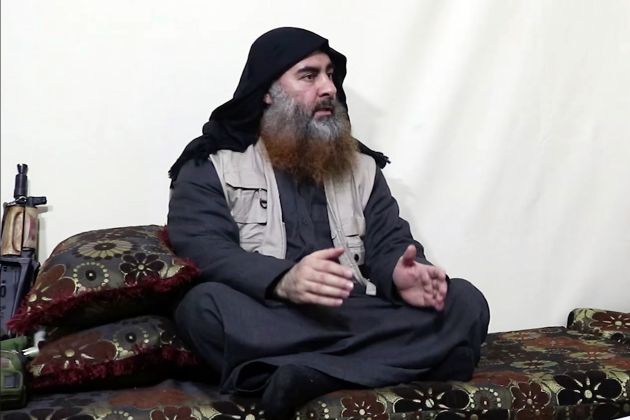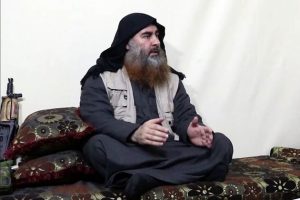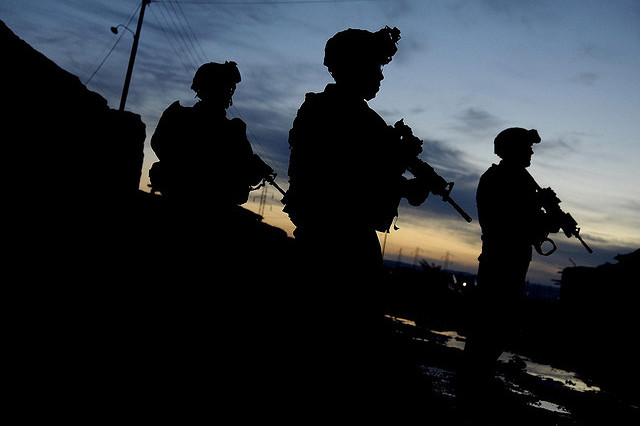by Richard Sindelar
The Islamic State (ISIS or IS) has now taken the next step on a path well worn by the PLO and al-Qaeda. It has begun its most virulent third stage with a multi-target, bloody rampage in Sri Lanka. As if to underscore IS’s new coming out after the fall of its central caliphate, the group’s soul and leader re-emerged on cue to call on his followers to reinvigorate their struggle.
The Sri Lankan attack and the re-emergence of Abu Bakr Al-Baghdadi carry multiple messages for the United States.
First and foremost, as described in my previous LobeLog post after the fall of Baghuz, IS is not going away. Indeed, the Sri Lanka events confirm that IS has firmly entered Middle Eastern terror’s third and most virulent phase: spectacular incidents that the group can be expected to mount over a number of years to draw worldwide media attention to its twisted message.
Second, following the path of previous Middle Eastern terror groups, IS will be a potent force for some years to come, especially with al-Baghdadi once again waving the black flag to rally his followers. The breadth and scope of the Sri Lankan attacks demonstrates that IS can and will mount spectacles in this third phase, again taking a page directly from the playbooks of the PLO and al-Qaeda.
Third, contrary to the more traditional PLO and al-Qaeda leadership models, IS has evolved as a diffuse amalgam of largely independent franchises. Al-Baghdadi called on those franchisees, located from Mali to Indonesia, to strike back in defense of their fallen brethren in a “war of attrition.” No longer are operations planned centrally, or by an arm of the broader organization with specific terror skills. Instead, IS has learned a new paradigm. It is recruiting disenchanted, disconnected younger folks, giving them the basic operational template through the dark web, and perhaps inspiring them to travel abroad to gain brief but crucial indoctrination and access to training, equipment, and explosives.
The destruction of the mother caliphate in Syria and Iraq did not crush IS, merely flung many of its bits and pieces into many corners of the globe where hardened fighters now lie low, waiting in their dark cells to strike when the time is right. Fewer than a dozen like-minded comrades are enough, as in Sri Lanka, to strike big.
Fourth, although there is no such thing as a “terrorist profile,” the Sri Lanka horror has underscored the fact that Middle Eastern terrorists are not necessarily poor, under-educated, marginalized, or unemployed. Indeed, Middle Eastern terror groups seem to hold more attraction for educated and sometimes well-to-do international millennials. Yasser Arafat was a trained engineer, Osama bin Laden came from a wealthy, privileged background, and so did the Ibrahim clan at the heart of the National Thowfeek Jamaath group that carried out the Sri Lankan operation. Anti-terror police as well as security and military analysts focus on the economically disconnected at the risk of missing deep disaffection among upper-class millennials.
Given this complex field of issues and psychologies, the immediate question is whether the intelligence and security arms of the U.S government can connect the dots and prevent any planned attack by IS terrorists. It is instructive that Sri Lankan Prime Minister Ranil Wickramasinghe was kept out of the loop by politics. Will U.S. policymakers react any better when the principle policymaker and commander in chief deliberately keeps himself outside the loop because he distrusts U.S. intelligence? Presented with a possible scenario for a planned attack, President Trump might decide to play golf instead, disdainful of anything on which the intelligence folks might brief him.
Is there another 9/11 in America’s near future, courtesy of an as-yet-unknown group of U.S.-based IS franchisees?
Richard Sindelar, a retired U.S. diplomat with three tours of duty in the State Department’s Bureau of Intelligence and Research, now serves as assistant professor of international studies at Houston’s University of St. Thomas, where he teaches courses in U.S. foreign policy and international security, among others.






Yasser Arafat and Osama bin Laden in the same breath? I think you left out Bibi Netanyahu.
Seems more like a joke! Without Binladen, the old US Ally how could us find a pretext to create a military turnover and now without Baghdadi how they can continue their infinitive militarism business working? US is the hen and likeslof Baghdadi the egg!
Without these hired tools for setting up “false flags” and excuses for more aggression in the ME/NA, what the hell the West under the US leadership CAN do?
PLO in a package with Al Qaeda and IS?! Arafat like Bin Laden?! All terrorists? Simplistic and worrying. Yes, Arafat was an engineer. Ghandi a lawyer, Obama too, Martin Luther King a reverend, Reagan an actor… And so what? Just confirms that access to education, Hollywood and CIA (Bin Laden) matters.